Clean tap water is essential to our lives – we cook, drink, wash our dishes and shower with it. Still, despite government regulations, there are some parts of the United States where tap water isn’t clean or healthy for human consumption.
To give you an overview of tap water quality across the US, in this article, we’ll discuss:
- States with the cleanest tap water
- States with the worst tap water quality
- How tap water quality is measured
- Most common tap water contaminants in the US
- What to do if you have bad tap water
Who Monitors Water Quality in the US?
The Environmental Protection Agency monitors water quality in the United States. Water quality, especially for tap and drinking water, is protected under the Safe Drinking Water Act. This act regulates what constitutes safe and contaminant-free water across the United States.
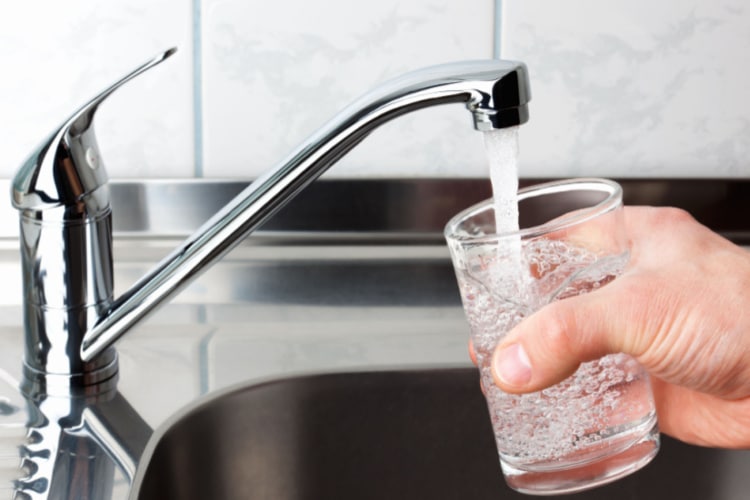
The SDWA was created in 1974 and amended in 1986, and then again in 1996. Since then, the EPA has monitored all water sources in the United States to ensure their safety from both artificial and natural contaminants. In addition, the EPA works with other governmental agencies, including the FDA, to spread information and educate citizens and entities on clean water best practices.
How Tap Water is Determined Clean/Safe to Drink
Tap water for each state in the US is measured via a point system. The EPA uses a graded approach to rate each state based on how many water code violations have occurred per 1,000 people. Each public water system is required to report its water quality and how many violations have occurred each year.
Public water systems run tests on their water tanks, filtration systems, and pipelines yearly. They measure the results of these tests against the national standard, and points are deducted for each Safe Drinking Water Act (SDWA) violation.
A violation involves at least one of the 90 possible contaminants under the SDWA. While some contaminants are more dangerous than others, none of the 90 should be in the water system. A public water system with multiple contaminants might be shut down.
With this system in place, the EPA can determine how healthy the water is in each state. If water is extremely unhealthy, the federal government may provide the community with federal aid.
States With the Best Tap Water in the US
Here are the top 10 states with the best tap water in the US:
Even though several government agencies regulate tap water across the country, some states have it better than others due to natural resources or other factors, such as clean, leak-free pipes and better filtration treatment for contaminants.
The states mentioned below have the best tap water in the United States due to their natural environment and government care. Although the EPA monitors tap water, it’s primarily up to state governments to treat and maintain their water sources before distributing water to residential homes.
Oregon
Oregon’s tap water is clean and safe to drink thanks to the abundance of natural water sources. The state gets most of its tap water from the Bull Run Watershed, which has been tested and proven to be one of the least contaminated natural watersheds in the United States.
Additionally, Oregon has minimal pollution, especially in the north, where the watershed begins. The state is environmentally conscious and keeps artificial pollutants out of the water.
Massachusetts
Massachusetts does not have the advantage of a pollutant-free watershed. Unlike Oregon, the state has relied mainly on governmental efforts to ensure that its water remains clean and safe for its citizens. But these efforts have paid off, as Massachusetts is on this list thanks to the state government’s diligence in rigorously treating the water supply before distributing it to homes.
The set of standards enforced by the EPA is already strict, but the Massachusetts Department of Environmental Protection regulations are even stricter. In this state, citizens are notified immediately of any contaminants present in their tap water, and the problem is usually fixed within days. The high standards of Massachusetts authorities sets an example for other states to emulate.
South Dakota
Although it’s not overpopulated, South Dakota consistently meets EPA’s water quality requirements. 95% or more of the population drinks water that passes all EPA standards for clean and accessible water. In addition, the state has been awarded the Secretary’s Award for Drinking Water Excellence for 18 years straight.
Minnesota
Minnesota is another northern state with ample access to natural water sources. Because of this, the state’s water is naturally cleaner than most states. However, Minnesota isn’t one of the purest water states in the nation simply because of its connection to rich natural resources. A lot of it has to do with the state government’s assistance to water suppliers via the The Minnesota Department of Health.
Saint Paul and Minneapolis, the Twin Cities of Minnesota, have some of the cleanest tap water in the US.
New Hampshire
New Hampshire is another state that goes above and beyond the EPA’s requirements for clean water. The drinking water in New Hampshire is cleaner than most states, not thanks to natural resources but to the fantastic filtration process and the state’s environmental protection acts.
In addition to banning common contaminants, the New Hampshire Department of Environmental Services limits PFAS compounds and harmful chemicals that can leak off of non-stick cookware and plastics. In banning these, New Hampshire has significantly improved its water quality beyond that of the average US state.
Kansas
Known as the Wheat State, almost 90% of Kansas is farmland; and being one of the nation’s largest agricultural producers makes it crucial for the state to have clean water.
Fortunately, water for the residents is immaculate, thanks to the state’s stringent laws that covers a wide array of practices, from water disinfection and filtration treatments to the use of herbicides and pesticides on agricultural grounds near public water sources. There are serious financial repercussions and civil penalties for both water suppliers and citizens that contaminate the public water supply.
Missouri
Missouri’s government has enforced state regulations on top of EPA’s mandatory water regulations. Missouri’s state regulations stipulate that public water officials must report on the level of cleanliness of their state’s drinking water more often and comprehensively than what EPA requires.
These strict laws have resulted in some of the cleanest water in the United States and worldwide. Missouri’s tap water is not only clean, but it also tastes better than average. For several years, the town of Independence, Missouri, has been named one of the best-tasting tap water locations in the world.
Rhode Island
Rhode Island is the smallest state in America but has multiple natural water resources, so it boasts some of the cleanest water in the nation.
To maintain this reputation, Rhode Island has stringent water pollution laws, including laws on the prevention of wastewater discharges and water pollution and water monitoring. Because 80% of the state’s freshwater comes from groundwater, they are extra careful about pollution.
Vermont
The Environmental Protection Agency requires at least 95% of homes to have access to clean water. Vermont has always met this requirement with ease, as upwards of 97% of Vermont’s homes have safe and clean access to water. Most of the population gets water from the public water system.
Public water systems in Vermont are some of the cleanest in the nation, with more routine monitoring than in many other states. The success of the public water system is due to legislative that pertains to crucial aspects of public water quality like groundwater protection, and it is facilitated by the quality of the natural water supply.
Hawaii
Hawaii is a fantastic place to live in the United States, not just because of the warm weather and island life but also because of the air and water quality. Hawaii ranks first in water cleanliness and second in air cleanliness.
Much of Hawaii’s tap water comes from freshwater streams in the volcanic regions of the islands. The state relies on these streams as it’s otherwise surrounded by saltwater. As a result, the island state’s environment is fragile.
Fortunately, the environment is protected by strict laws and regulations which have proven effective, as the latest reports show that there are no contaminants found in Hawaii’s water.
States With the Worst Tap Water in the US
While many states enjoy clean and healthy tap water, others struggle to comply with EPA standards. With over 90 contaminants to watch out for, leaky pipes, and chemical or oil spills, these states have failed to meet the guidelines put forward by the Safe Drinking Water Act.
Here are the top 10 states with the worst tap water in the US:
If you live in one of these states, it doesn’t necessarily mean that your drinking water is unhealthy. However, you should check your local government site and the EPA’s website to find if you need to treat your tap water before drinking.
New Jersey
New Jersey is home to many of America’s factories and industrial complexes. As a result, there are alarming levels of BPA (bisphenol A, a type of plastic that can affect brain health) and PFC (perfluorochemicals that can affect growth and development) in the land’s habitat and water supply.
In addition, New Jersey doesn’t have many natural water sources. Combined, the high BPA and PFC levels from industrial complexes and the lack of natural water sources makes the water in New Jersey substandard and less clean than in other states.
For several years, the public water systems in New Jersey have been in violation of many of EPA’s drinking water codes. In Newark, many residents rely on bottled water or store-bought reverse osmosis filtered water. Yet, the state is currently working on legislation for cleaner water.
Georgia
The waterways (rivers and streams) of Georgia are home to toxic discharge from factories, and they’re among the worst in the US. This is mainly due to improper toxic waste practices, which have resulted in high levels of several dangerous chemicals in the public water system, well above the legal limits.
Radium and TTHMs are some of the chemicals present in Georgia’s water. Both of these chemicals have been associated with different cancer types. As a result, Georgia’s water is marked unsafe in many parts of the state. If you live in Georgia, check with your local authorities to see how clean and safe the tap water in your area is.
Arizona
Arizona is a desert state, so it doesn’t have a lot of natural water. To make things worse, its imported water and scarce natural water sources are polluted.
Arizona’s water is high in chromium-6, which is a known carcinogen. This is particularly concerning because the water filtration system in some Arizona cities is not adequately set up to decontaminate the water.
If you live in or are visiting Arizona, check with your local municipality to learn more about your water quality and how to protect yourself.
Ohio
Ohio is another state that has a lot of agriculture and industrial complexes. Although there are natural water resources, the pollution from former mining towns and industrial complexes has made Ohio one of the most polluted states in the nation, which inevitably affects the quality of tap water.
Towns and cities in Ohio have suffered from lead exposure, carcinogens, and coal pollutants. This is because the filtration system fails to remove all the contaminants from drinking water sources, and many of Ohio’s public water systems are in violation of the EPA’s codes.
In addition, newly emerging (meaning that they’re still not regulated by the EPA) chemical compounds like PFAS are amply present in more than 100 water systems in Ohio. Considering that PFAS are associated with an increased risk of cancer, this is a very serious concern.
Florida
Like many other US states, Florida relies on groundwater sources for tap water. Yet, with each passing day, the groundwater sources in Florida are getting more and more contaminated due to population growth and unregulated agricultural and industrial waste disposal practices.
Hence, tap water has alarming levels of a variety of contaminants, from heavy metals like hexavalent chromium to newly emerging chemical compounds like PFAS.
Additionally, in the wake of several devastating hurricanes, there were two different algae outbreaks in Florida in 2017 and 2018. Also known as the Red Tide epidemic, the outbreak of red algae affected and still continues to affect saltwater, while the blue-green algae affect ponds and streams.
Texas
Like Florida, Texas has had issues with red tide and algae outbreaks. However, since the state is very big, not all areas are affected by gulf waters.
Additionally, Inland Texan communities have some of the most irradiated and polluted water in the country.
Rural communities suffer the most in Texas and lack support from the state government because of their small populations. As a result, hundreds of public water systems are in violation of the EPA’s standards, some severely so. Lead, arsenic, asbestos, and radium are the most concerning contaminants commonly found in Texas water.
Michigan
The 2014 Flint Water Crisis made the news when several residents of Flint, Michigan, died of lead poisoning from drinking contaminated tap water, so Michigan is pretty infamous when it comes to its water quality.
The state has made efforts to improve the quality of tap water since the Flint Water Crisis first made headlines, but it still struggles with high levels of lead and carcinogens in its water. The state overall has a good water-quality score, but eastern Michigan (near Flint and Detroit) consistently score lower. Western and Northern Michigan have relatively clean water, thanks to the Great Lakes.
California
Like Texas and other large states, California’s poor water quality primarily affects its lower-income, more rural areas. Many farmlands and other rural areas suffer from a low-quality water supply that exposes most of the state’s population to dangerous contaminants like arsenic and nitrates.
California’s cities have their own standards and laws for water quality, separate from the state standard. As a result, cities can meet certain standards, but rural and country communities remain the most affected by the low water quality.
However, the state government of California has been actively trying to rectify the situation. Although it may take years, California is on the right track when it comes to clean and healthy water.
Pennsylvania
Pennsylvania is one of the industrial capitals of the United States. While this is good for the economy, industrial practices are one of the most common culprits behind contaminated drinking water simply because of their use of chemicals with a high contaminance risk.
Unfortunately, this also affects the drinking water in Pennsylvania and makes it difficult for many cities in the state to get access to clean drinking water. Levels of heavy metals like arsenic, radium, and barium exceed legal standards.
In addition, unregulated coal mining decreases the water quality in Pennsylvania even further. Without governmental regulations in place to protect the environment, coal continues to contaminate local water sources. Although this practice is no longer central to Pennsylvania’s economy, its effects are still seen in the state’s waterways and tap water.
Washington
While Washington has plenty of natural resources for fresh water, it fails to provide quality drinking water to many of its residents. Even in the state’s most eco-conscious large cities like Seattle, the arsenic and radium presence in drinking water exceeds EPA standards.
The case is even worse in rural communities, which makes up 20% of the state’s population. Rural Washington has some of the most toxic water in the country. The regulations implemented by the state fall short when it comes to protecting the rural groundwater sources from contamination by herbicides and pesticides.
Washington has received failing grades from the EPA for not adequately testing for lead, failing to filter water, and not providing clean water to multiple communities that are facing a clean water deficit, partly because of environmental changes and a number of natural water resources in the state drying up.
Water Report for Other Popular Cities/States
We have separate water report articles for some popular cities in the US you can check out if you want to learn more:
The 5 Most Common US Tap Water Contaminants
Of course, not all 90 SDWA contaminants are common. Some are very rare, while others occur naturally and have to be filtered out. Here are the top five most common water contaminants and why they are dangerous:
1. Lead
The most common contaminant in water supplies is lead. In small amounts, lead isn’t dangerous. However, too much lead can lead to lead poisoning, which can occur months or even years after exposure.
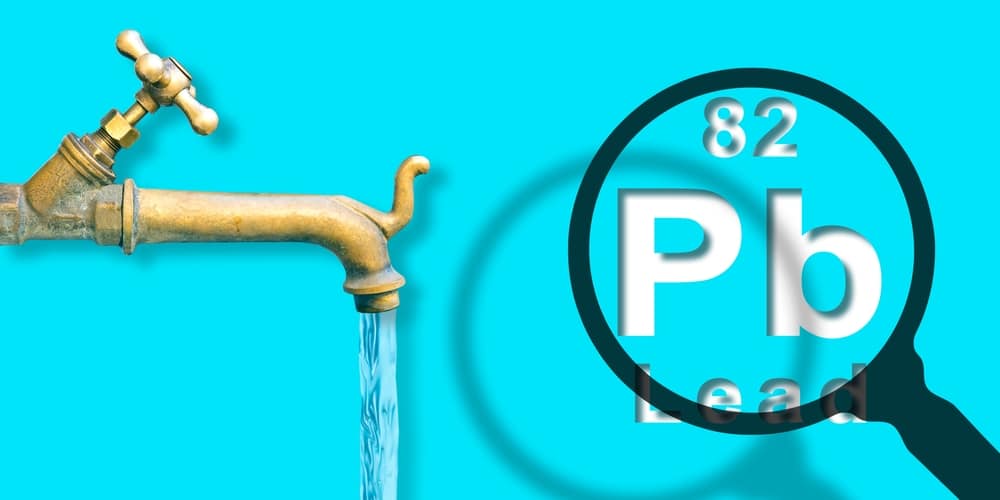
Lead enters water supplies in cities or areas with old pipes. The chemical is able to seep into the water if the lines were made of lead. You should replace older pipes with a different type of metal to prevent lead poisoning or choose to remove it with lead water removal methods.
2. Mercury
While mercury may occur naturally, most of the mercury found in water (especially household drinking water) is due to different types of runoff: industrial, commercial, medical, residential, and sewage discharge.
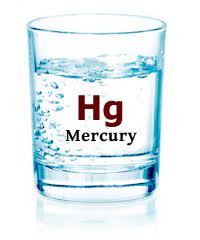
Small amounts of mercury is harmless, but mercury poisoning can occur when too much mercury is ingested, breathed in, or touched, leading to kidney failure and other dangerous issues.
3. Chlorine
When people think of chlorination, they often associate it with swimming pools. However, much of our drinking water is chlorinated to keep it safe and free from contaminants. A safe amount of chlorine is frequently added to a city’s tap water as a disinfectant to protect against waterborne disease.
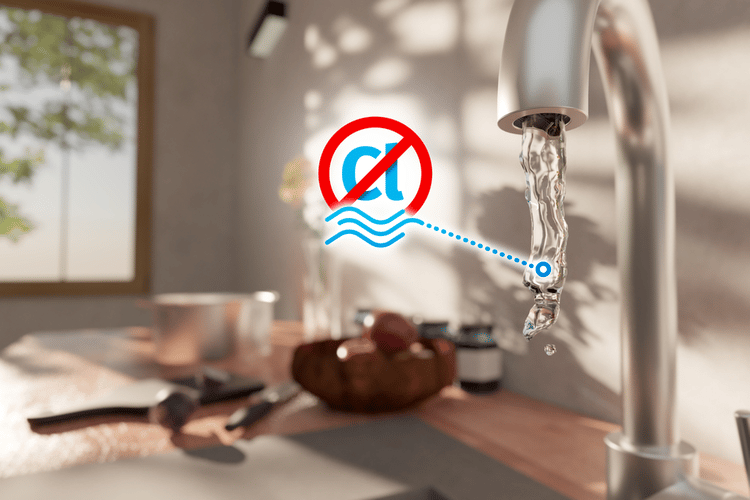
However, if you are sensitive to chlorine, you can remove it from water using a water filter or other chlorine removal methods.
4. Pesticides/Herbicides
Pesticides and herbicides are often used in the farming industry. They kill off pests to prevent them from destroying crops. However, herbicides and pesticides sometimes run off the crops and into the surface water of the surrounding area.
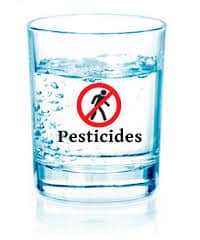
If these toxins are in drinking water, they may cause health issues, depending on the strength of the chemicals used and the level of concentration.
5. Volatile Organic Compounds
Volatile Organic Compounds, or VOCs, are mostly man-made compounds that evaporate quickly. These are found in many products, from paint to chloroform, but they are challenging to monitor in the water supply.
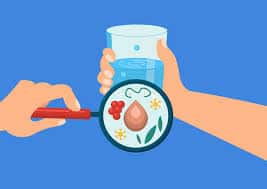
VOCs are some of the most dangerous compounds in water and are strictly regulated by the EPA. The most common VOC is actually chloroform. This chemical can be present in drinking water that has been chlorinated, if the chlorine has interacted with organic matter in the water itself.
What To Do if You Have Bad Tap Water
If you’re worried about your tap water or see your state listed above, there are several steps you can take to ensure you family’s safety. First, you should contact your local public water supplier and ask for a copy of their latest report. Water quality reports are public record and available to everyone.
You can also run a tap water test at home. Water test kits are available online and can measure the presence of certain chemicals in your tap water. If you decide to run your own tap water test, make sure you buy two and test them a few days apart for the best accuracy.
If water is terrible in your area, it might take a while for the government to address the issue. Therefore, having portable water purification devices such as a reverse osmosis water filter or point-of-entry water filtration systems for home use can significantly improve your water quality.
While the EPA monitors the status of water safety in each region, you may still be drinking contaminated water. If your municipality hasn’t met the water standards set by the EPA, they will have to notify you in their annual Consumer Confidence Report. Bottled water might be your best option in this case.
Conclusion
It can be enlightening to learn which states make the top and bottom of the list when it comes to tap water quality in the US, as they are not always obvious. After all, states like Washington is known for its lush wildlife and ample water resources, yet the water quality is low. In contrast, Hawaii is entirely surrounded by seawater and has one of the safest water supplies all across the US.
However, no matter where you live, you need to be aware of what’s in your tap water. You may live in a city or municipality that doesn’t have rigorous standards like the rest of your state.
In such cases, if you’re worried about things like VOCs, pesticide runoff, or lead, there are steps you can take to protect yourself and your home. Update your pipes, or consider getting a quality water filter to remove the contaminants.
For the most part, the EPA does a fantastic job when it comes to setting standards to keep our drinking water safe. Contact your local water supplier today to learn more about your tap water.
Hi Scott,
I live in Texas and where I run a small non-profit. One of our initiatives is dirty water. I have done some research and noticed that Texas is among the top five for the dirtiest water in the country. We would love to have you on our FB Live show to answer questions. First, would you be interested, and second, what is your availability?
Thank you.
Hello Dr. Goss, thank you for all you do with your BCDI nonprofit organization. Thank you for this offer and I will e-mail you to discuss.
Bartlesville, Oklahoma’s water is disugustin.